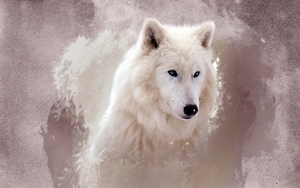18829268
Tectonic Hazards - Gateway 1
Description
No tags specified
Flashcards by Natania Leong, updated more than 1 year ago
More
Less

|
Created by Natania Leong
over 6 years ago
|
|
Resource summary
| Question | Answer |
| What are the main types of tectonic hazards? | Earthquakes, tsunamis and volcanic eruptions |
| What are the main types of climatic hazards? | Droughts, floods, forest fires and tropical cyclones |
| Describe the internal structure of the earth from the outside in. | The crust is made of basalt and granite rocks and is a few km to more than 70 km thick. Below that is the mantle, which is made of mostly solid rock that flows under high temperature and pressure, is about 2900 km thick and its temperature ranges from 800 to 3000 degrees celsius. Below that is the core, which is made of mostly iron and nickel. Separated into the liquid outer core and the solid inner core, it is about 3500 km thick and its temperature ranges from 3000 to 5000 degrees celsius. |
| Explain how plates move due to convection currents in the mantle. | Mantle material is heated by the core, forming convection currents since hot molten magma expands, rises and spreads out beneath plates, causing plates to dragged along and move away from each other. Subsequently, the molten magma cools and sinks, pulling plates along and thus, plates move together. This cycle repeats as molten magma is heated once again by the core. |
| Explain how plates move due to the slab-pull force. | The slab-pull force occurs when a denser oceanic plate subducts under a less dense continental or oceanic plate and pulls the rest of the plate along. The subducting plate drives the downward-moving portion of sinking convection currents in the subduction zone. Mantle away from the subduction zone drives the rising portion of convection currents. |
| How do earthquakes happen? | As the movement of plates is not smooth at the boundary, the rocks are subject to great stress and get stuck and deformed due to much friction. When the energy can no longer be contained, they are released in the form of seismic waves as the rocks are deformed and jerk free into new positions. The seismic waves cause the ocean floor to vibrate, a phenomenon known as earthquakes. |
| OOD faulting, sea-floor spreading, volcanism, earthquakes | Tensional stresses cause fractures to occur in the lithosphere. Basaltic magma wells up and rises from the mantle to fill the gap between the plates and forms new sea floor. This process is called sea-floor spreading. Basaltic magma also forms mountain ridges of new ocean floor on either side of the spreading zone, called mid-oceanic ridges. Along the mid-oceanic ridge, basaltic magma escapes through fractures to form submarine rift volcanoes, some of which build up above sea level to form volcanic islands + earthquakes ** North American Plate and Eurasian Plate form the Mid-Atlantic Ridge |
| CCD faulting, volcanism, earthquakes African Plate and Arabian Plate form Great Rift Valley | When two continental plates move apart at the divergent plate boundary, tensional stresses exerted on the plates cause fractures to form in the crust. Along the faults, the land in between the two plates sinks, forming steep-sided linear depressions called rift valleys. Continents may break up and floors of rift valleys may fill up to form elongated lakes called rift valley lakes, which may join up to form a linear sea. Basaltic magma may well up, rise and be extruded through faults to form rift volcanoes + earthquakes African Plate and Arabian Plate form Great Rift Valley |
| OOC subduction, faulting, volcanism, earthquakes | Two plates converge and collide and the denser oceanic plate subducts under the overriding less dense oceanic plate. At the subduction zone, a deep depression, called an oceanic trench, on the ocean floor is created. Compressional forces cause faulting and the crust of the subducted plate melts in the mantle, forming acidic magma, which rises through fractures to form subduction volcanoes, which are called volcanic arcs if they are positioned in the shape of an arc and over time, these volcanic arcs may rise above sea level to form a chain of islands called island arcs + earthquakes Pacific Plate and Philippine Plate form Mariana Trench |
| CCC faulting, folding, earthquakes | Two plates converge and but do not subduct due to similar densities. Compressional forces cause plates to buckle, break and slide along faults formed in the crust. Layers of rock of the upper part of the crust are compressed, contorted, folded sideways and uplifted, forming fold mountains + earthquakes Eurasian and Indian Plate converge to form Himalayas/Mt Everest |
| OCC subduction, faulting, volcanism, folding, earthquakes | Two plates collide and the denser oceanic plate subducts under the less dense continental plate. At the subduction zone, a deep depression is created on the ocean floor and is called an oceanic trench. Compressional forces cause faults to form in the continental crust. The subducted plate melts due to the heat in the mantle to produce magma which rises through fractures to emerge as volcanoes. The edges of the overriding continental plate and the sediment of the ocean floor are contorted, folded and uplifted to form fold mountains + earthquakes Eurasian and Australian Plates form Sunda Trench |
| Transform plate boundary faulting and earthquakes | At a transform plate boundary, the two plates slide horizontally past each other in opposite directions, no new crust created and no existing crust destroyed. The grinding of the two plates forms visible fractures in the Earth's crust + earthquakes Pacific Plate and North American Plate slide past each other to form the San Andreas fault |
Want to create your own Flashcards for free with GoConqr? Learn more.
